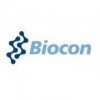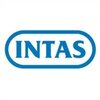Filter interviews by
Cadila Pharmaceuticals Graduate Apprentice Interview Questions and Answers
Cadila Pharmaceuticals Graduate Apprentice Interview Experiences
1 interview found
I applied via Company Website and was interviewed in Aug 2021. There were 3 interview rounds.
Interview Questionnaire
1 Question
- Q1. They asked me all about tablet and their production process their defects etc...
Interview Preparation Tips
Top trending discussions






Interview questions from similar companies

Graduate Apprentice Interview Questions & Answers
Zydus Lifesciencesposted on 14 Aug 2024
(2 Questions)
- Q1. Strokes of engine of diesel engine
- Ans.
A diesel engine has four strokes: intake, compression, power, and exhaust.
Intake stroke: Air is drawn into the cylinder.
Compression stroke: Air is compressed to increase temperature and pressure.
Power stroke: Fuel is injected and ignited, causing the piston to move downward.
Exhaust stroke: Waste gases are expelled from the cylinder.
- Q2. Laws of conservation of mass
- Ans.
The laws of conservation of mass state that mass cannot be created or destroyed in a chemical reaction.
Mass is neither created nor destroyed in a chemical reaction, it is only rearranged.
The total mass of the reactants must equal the total mass of the products in a chemical reaction.
This principle is a fundamental concept in chemistry and is used to balance chemical equations.
For example, in the reaction of hydrogen ga...

(2 Questions)
- Q1. What is the transformer
- Ans.
A transformer is an electrical device that transfers electrical energy between two or more circuits through electromagnetic induction.
Consists of primary and secondary coils
Operates on the principle of Faraday's law of electromagnetic induction
Used to step up or step down voltage levels
Commonly used in power distribution systems
- Q2. What is the electrical
- Ans.
The electrical field refers to the area of study and application of electricity and electromagnetism.
Study of electrical circuits and components
Application of electrical principles in devices and systems
Understanding of electromagnetism and its effects
Knowledge of electrical safety practices
(2 Questions)
- Q1. What is the transformer
- Ans.
A transformer is an electrical device that transfers electrical energy between two or more circuits through electromagnetic induction.
Transformers are used to increase or decrease voltage levels in electrical circuits.
They consist of two coils of wire, known as the primary and secondary coils, wrapped around a core.
Step-up transformers increase voltage levels, while step-down transformers decrease voltage levels.
Transf...
- Q2. What is the electrical
- Ans.
The electrical field refers to the area of study and application of electricity and electromagnetism.
Study and application of electricity and electromagnetism
Involves understanding circuits, power systems, and electronic devices
Used in various industries such as engineering, telecommunications, and electronics
Interview Preparation Tips

(2 Questions)
- Q1. Salary discussion
- Q2. What is the policy regarding working and off days?
- Ans.
The policy regarding working and off days is based on a set schedule determined by the company.
Employees are expected to work a set number of hours per week as outlined in their contract.
Off days are typically scheduled in advance and may vary depending on the needs of the business.
Employees may be required to work on weekends or holidays depending on the nature of their job.
Requests for time off must be submitted and ...

Apprenticeship Trainee Interview Questions & Answers
Aurobindo Pharmaposted on 10 Nov 2024
I applied via Approached by Company and was interviewed in Oct 2024. There was 1 interview round.
(2 Questions)
- Q1. Self introduction for you
- Q2. Previous experience

I applied via Job Fair and was interviewed in Sep 2023. There were 2 interview rounds.
Topic - English and Reasoning
(2 Questions)
- Q1. Learn basics about Tablet manufacturing process and Gmp guidlines
- Q2. Introduction What is Tablet. What is GMP QA QA tests of Tablet in detail

Apprentice Trainee Interview Questions & Answers
Sun Pharmaceutical Industriesposted on 25 Nov 2023
I applied via Walk-in and was interviewed in May 2023. There were 2 interview rounds.

(6 Questions)
- Q1. What is ETP ,MEE ,RO ,STP principals
- Ans.
ETP, MEE, RO, STP are principals related to wastewater treatment processes.
ETP stands for Effluent Treatment Plant, which is used to treat industrial wastewater before it is discharged into the environment.
MEE stands for Multiple Effect Evaporator, which is a thermal evaporation process used to concentrate wastewater by removing water through evaporation.
RO stands for Reverse Osmosis, which is a water purification proc...
- Q2. WHAT IS COD TDS TDS MLSS MLVSS ZLD ETC.
- Ans.
COD, TDS, TDS, MLSS, MLVSS, ZLD, etc. are abbreviations used in various fields.
COD stands for Chemical Oxygen Demand and is a measure of the amount of oxygen required to oxidize organic and inorganic matter in water.
TDS stands for Total Dissolved Solids and refers to the total concentration of dissolved substances in water.
TDS can include minerals, salts, metals, and other substances.
MLSS stands for Mixed Liquor Suspen...
- Q3. What is ETP STP MEE RO process
- Ans.
ETP STP MEE RO process is a series of wastewater treatment processes used to remove pollutants from industrial and domestic wastewater.
ETP stands for Effluent Treatment Plant, which is used to treat industrial wastewater before it is discharged into the environment.
STP stands for Sewage Treatment Plant, which is used to treat domestic wastewater before it is released into rivers or oceans.
MEE stands for Multiple Effect...
- Q4. What is EIA, HAHARDOUS MANAGEMENT,
- Ans.
EIA stands for Environmental Impact Assessment. Hazardous management refers to the process of identifying, assessing, and controlling hazards in order to prevent accidents and protect the environment.
EIA is a process used to evaluate the potential environmental impacts of a proposed project or development.
It involves identifying and assessing the potential impacts on various aspects such as air, water, land, and biodiv...
- Q5. What is full of ETP MEE RO STP ZLD EIA
- Ans.
The answer to the question is 'WATER'.
The letters ETP, MEE, RO, STP, ZLD, and EIA are all related to different water treatment processes.
ETP stands for Effluent Treatment Plant, which is used to treat industrial wastewater.
MEE stands for Multiple Effect Evaporator, which is used to concentrate liquid waste.
RO stands for Reverse Osmosis, which is a water purification process.
STP stands for Sewage Treatment Plant, which ...
- Q6. Knowledge of environmental compliance
Interview Preparation Tips

I applied via Walk-in and was interviewed in Mar 2023. There were 3 interview rounds.

(1 Question)
- Q1. Introduction Pharmacy related questions Job title full form. Definition
(1 Question)
- Q1. Tricky question like. Why are you join, where are you from, expecting what
Interview Preparation Tips

I applied via Naukri.com and was interviewed in Feb 2023. There were 2 interview rounds.

(3 Questions)
- Q1. Mostly regarding projects
- Q2. Validation parameters
- Q3. Difference between HPLC and GC detectors
- Ans.
HPLC and GC detectors differ in their principles of detection and types of analytes they can detect.
HPLC detectors use UV-Vis, fluorescence, or electrochemical detection to analyze liquid samples, while GC detectors use thermal conductivity, flame ionization, or mass spectrometry to analyze gas samples.
HPLC detectors are suitable for analyzing polar and non-volatile compounds, while GC detectors are better for analyzin...
Interview Preparation Tips
- Method Validation
- Method Development
- ICH

Apprentice Trainee Interview Questions & Answers
Alembic Pharmaceuticalsposted on 1 Feb 2022
(4 Questions)
- Q1. Introduce yourself and your family background?
- Q2. What is the role of medical representative?
- Q3. Why you want to do MR job ?
- Q4. Why we hire you when we have an experience candidate?
(4 Questions)
- Q1. What is pharmaceutical sales ?
- Q2. What is Pharmacology?
- Q3. Define Cmax & Tmax? What is AUC?
- Q4. What is RCPA & POB ? What is primary sale & secondary sale?
Skills evaluated in this interview
Tell us how to improve this page.
Cadila Pharmaceuticals Interviews By Designations
- Cadila Pharmaceuticals Medical Representative Interview Questions
- Cadila Pharmaceuticals Field Officer Interview Questions
- Cadila Pharmaceuticals Assistant Manager Interview Questions
- Cadila Pharmaceuticals Sales Manager Interview Questions
- Cadila Pharmaceuticals Deputy Manager Interview Questions
- Cadila Pharmaceuticals Production Officer Interview Questions
- Cadila Pharmaceuticals Senior Executive Interview Questions
- Cadila Pharmaceuticals Area Business Manager Interview Questions
- Show more
Interview Questions for Popular Designations
- Apprentice Interview Questions
- Apprentice Trainee Interview Questions
- Apprenticeship Trainee Interview Questions
- Graduate Apprentice Trainee Interview Questions
- Graduate Apprenticeship Trainee Interview Questions
- Diploma Apprentice Trainee Interview Questions
- Apprentice Engineer Interview Questions
- Technician Apprentice Interview Questions
- Show more
Interview Questions from Similar Companies
Cadila Pharmaceuticals Graduate Apprentice Reviews and Ratings
based on 1 review
Rating in categories
|
Assistant Manager
283
salaries
| ₹4.7 L/yr - ₹13.5 L/yr |
|
Senior Executive
236
salaries
| ₹4.4 L/yr - ₹11.3 L/yr |
|
Technical Supervisor
224
salaries
| ₹1.3 L/yr - ₹4.5 L/yr |
|
Officer
219
salaries
| ₹1.9 L/yr - ₹5.5 L/yr |
|
Executive
218
salaries
| ₹3 L/yr - ₹7.5 L/yr |

Sun Pharmaceutical Industries

Cipla

DRJ & CO

Biocon Limited
- Home >
- Interviews >
- Cadila Pharmaceuticals Interview Questions >
- Cadila Pharmaceuticals Graduate Apprentice Interview Questions











